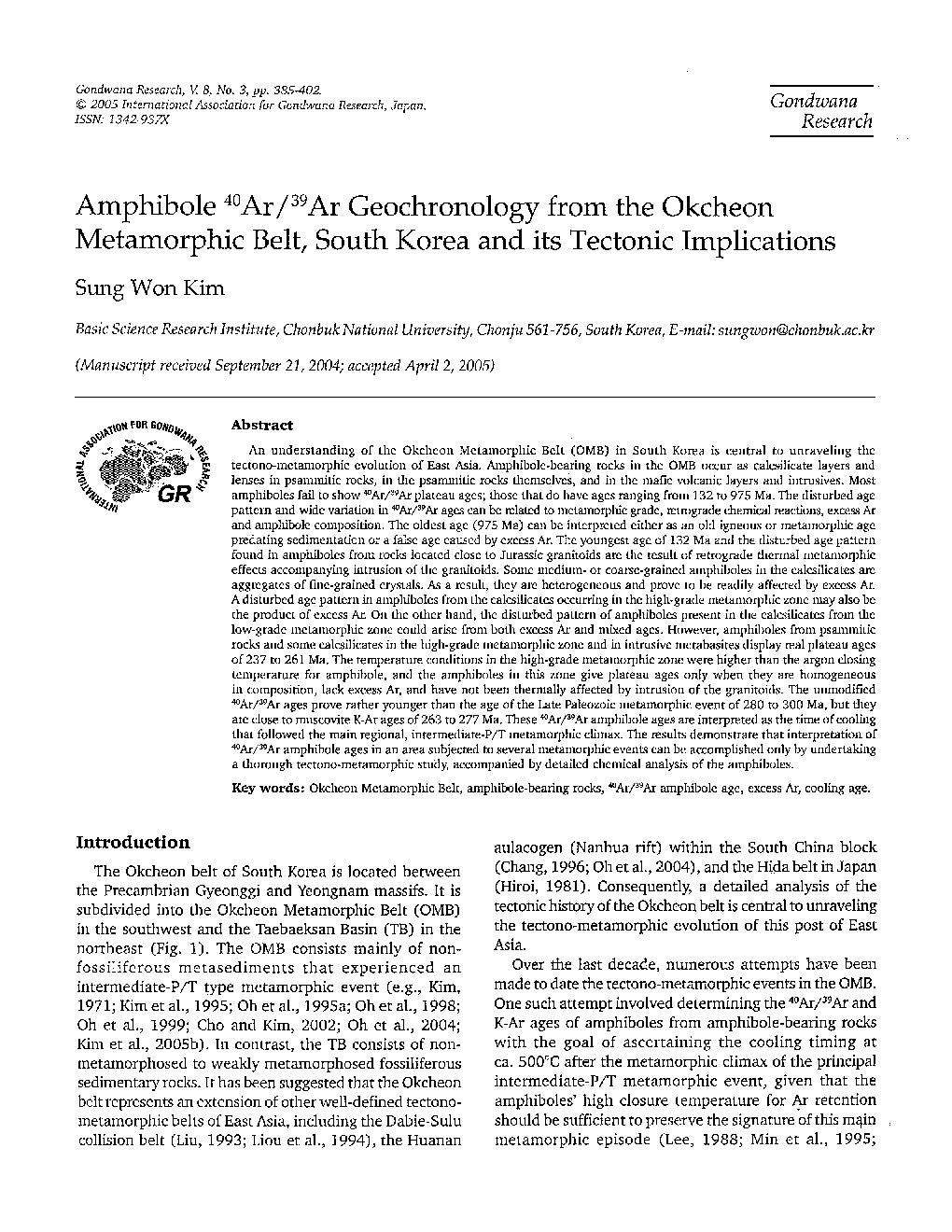| کد مقاله | کد نشریه | سال انتشار | مقاله انگلیسی | نسخه تمام متن |
|---|---|---|---|---|
| 9534781 | 1356423 | 2005 | 18 صفحه PDF | دانلود رایگان |
عنوان انگلیسی مقاله ISI
Amphibole 40Ar/39Ar Geochronology from the Okcheon Metamorphic Belt, South Korea and its Tectonic Implications
دانلود مقاله + سفارش ترجمه
دانلود مقاله ISI انگلیسی
رایگان برای ایرانیان
موضوعات مرتبط
مهندسی و علوم پایه
علوم زمین و سیارات
زمین شناسی
پیش نمایش صفحه اول مقاله

چکیده انگلیسی
An understanding of the Okcheon Metamorphic Belt (OMB) in South Korea is central to unraveling the tectono-metamorphic evolution of East Asia. Amphibole-bearing rocks in the OMB occur as calcsilicate layers and lenses in psammitic rocks, in the psammitic rocks themselves, and in the mafic volcanic layers and intrusives. Most amphiboles fail to show 40Ar/39Ar plateau ages; those that do have ages ranging from 132 to 975 Ma. The disturbed age pattern and wide variation in 40Ar/39Ar ages can be related to metamorphic grade, retrograde chemical reactions, excess Ar and amphibole composition. The oldest age (975 Ma) can be interpreted either as an old igneous or metamorphic age predating sedimentation or a false age caused by excess Ar. The youngest age of 132 Ma and the disturbed age pattern found in amphiboles from rocks located close to Jurassic granitoids are the result of retrograde thermal metamorphic effects accompanying intrusion of the granitoids. Some medium- or coarse-grained amphiboles in the calcsilicates are aggregates of fine-grained crystals. As a result, they are heterogeneous and prove to be readily affected by excess Ar. A disturbed age pattern in amphiboles from the calcsilicates occurring in the high-grade metamorphic zone may also be the product of excess Ar. On the other hand, the disturbed pattern of amphiboles present in the calcsilicates from the low-grade metamorphic zone could arise from both excess Ar and mixed ages. However, amphiboles from psammitic rocks and some calcsilicates in the high-grade metamorphic zone and in intrusive metabasites display real plateau ages of 237 to 261 Ma. The temperature conditions in the high-grade metamorphic zone were higher than the argon closing temperature for amphibole, and the amphiboles in this zone give plateau ages only when they are homogeneous in composition, lack excess Ar, and have not been thermally affected by intrusion of the granitoids. The unmodified 40Ar/39Ar ages prove rather younger than the age of the Late Paleozoic metamorphic event of 280 to 300 Ma, but they are close to muscovite K-Ar ages of 263 to 277 Ma. These 40Ar/39Ar amphibole ages are interpreted as the time of cooling that followed the main regional, intermediate-P/T metamorphic climax. The results demonstrate that interpretation of 40Ar/39Ar amphibole ages in an area subjected to several metamorphic events can be accomplished only by undertaking a thorough tectono-metamorphic study, accompanied by detailed chemical analysis of the amphiboles.
ناشر
Database: Elsevier - ScienceDirect (ساینس دایرکت)
Journal: Gondwana Research - Volume 8, Issue 3, July 2005, Pages 385-402
Journal: Gondwana Research - Volume 8, Issue 3, July 2005, Pages 385-402
نویسندگان
Sung Won Kim,